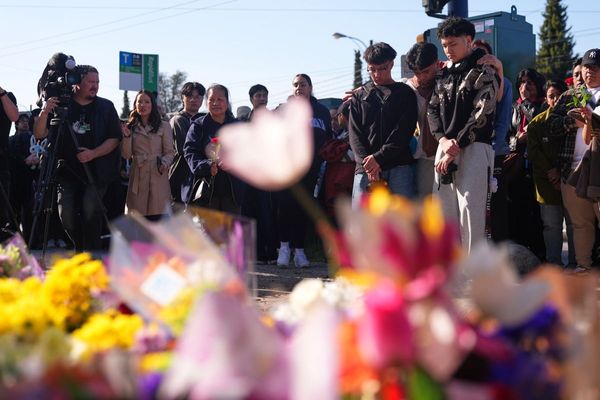
April 22 will go down as yet another sad day in the history of Kashmir, already littered with memories of bloodshed and loss. Amid this landscape of brutality, the killing of over 26 tourists in Pahalgam’s picturesque Baisaran meadow in a terror attack stands out – not just for its scale, but for the unprecedented public shock and horror it has triggered.
History of attacks on pilgrims
It is the first major selective targeting of tourists on a catastrophic scale. The attacks on tourists need to be viewed distinctly from the attacks on Amarnath pilgrims, which were mostly linked to excessive politicisation of the yatra, particularly by the Hindu right-wing. While the seasonal pilgrimage (originally 15 days) was conducted peacefully between 1990 and 1999 when militancy was at its peak, the following decades witnessed several attacks between 2000 and 2017.
On August 2, 2000, at least 21 civilians including 10 pilgrims were killed in an attack on the Amarnath pilgrimage base camp at Pahalgam. In 2001, six pilgrims among 13 people were killed when a militant hurled grenades and opened fire near the Amarnath shrine. In 2002, eight pilgrims were killed and 30 injured in an attack on the Nunwan camp. In July 2017, seven pilgrims were killed and 19 injured when suspected terrorists attacked a bus returning from the Amarnath shrine.
While these attacks are a part of the broader insurgency, critics in the past have blamed the RSS-BJP’s politicisation of the Amarnath Yatra and their promotion of the pilgrimage as a symbol of Hindu identity, coupled with extended duration and scale. This is perceived to exacerbate tensions in Kashmir, fueling militant narratives.
Attacks on tourists were rare
Unlike the pilgrims of this seasonal yatra that is now conducted for two months, tourists have not been threatened by militants or rarely come under attack. In the mid-90s, seven Israeli tourists in a houseboat were attacked. The militants killed one and injured three others, marking the first time foreign tourists were targeted in Srinagar, before one of the tourists, presumably an ex-serviceman, snatched the militants’ rifles and shot two of them down.
On July 4, 1995, six foreign tourists were kidnapped by Al-Faran, an off-shoot of militant group Harkat-ul-Ansar. While one of them – John Childs – escaped, Hans Christian Ostro was beheaded and the remaining four victims – Donald Hutchings, Keith Mangan, Paul Wells and Dirk Hasert – were presumed dead. The murky layers of this episode are well documented in Adrian Levy and Cathy Scott Clark’s book The Meadow: Kashmir 1995 – Where the Terror Began.
On May 25, 2006, militants threw a grenade at a tourist bus from Gujarat in Srinagar as it traveled toward Mughal Gardens, killing four tourists and injuring six others.
In light of this background, Tuesday’s bloodbath in Pahalgam is unprecedented and naturally evoked a spontaneous and strong reaction in Kashmir with condemnations and grief pouring out through statements and social media posts, followed by candlelight vigils and calls for a protest bandh.
Shock and concerns in Kashmir
While no sane element in Kashmir condones civilian killings, there is even lesser acceptability for attacks on tourists. Tourism is an important economic lifeline for at least 15 to 20 percent people connected with the tourism industry.
Known for their exceptional hospitality, any harm caused to tourists also militates against the Kashmiri ethos and sensibility, even as the BJP has attempted to politicise tourism in the post-2019 era. The scale and brutality of the Pahalgam incident is also horrifying enough to have triggered widespread condemnation.
What adds to the anxiety of the Kashmiris, and rest of Jammu and Kashmir, is the fragility of peace in Jammu and Kashmir, where people who have endured violence for over three decades are wary of escalation. Simultaneously, Kashmiris fear potential backlash against them, anxieties heightened as Indian media coverage of the Pahalgam attack has shifted from asking vital questions to calls for “revenge,” while social media fills with propaganda carrying communal overtones and demands not merely for retaliation but for Israeli-style “cleaning operations” in Kashmir.
Facts a casualty
According to reports, The Resistance Front, said to be an offshoot of Pakistan based Lashkar-e-Toiba, has claimed responsibility for the attack. While the veracity of this is not known, sections of media and political personalities have begun speculating on the Pakistan angle or linking the incident to US vice-president JD Vance’s visit. While some or all of this could be true, at the moment there is nothing that makes it a case of informed opinion.
Amidst this din of misinformed assumptions and calls baying for blood, truth has been a complete casualty. Hours after the incident, there is little known about what happened on the ground.
Though no detailed accounts have yet emerged, an unspecified number of militants descended from the hills enveloping the meadow and started spraying bullets. Some reports indicated they segregated men from women and killed the former, another saying they were segregated on the basis of their communal identity. Eyewitnesses who survived the ordeal said they did not see as they scrambled for life towards the exit of the meadow – only hearing gun shots and screams behind their back for 15 minutes.
There are also versions of locals, forest and traffic police rushing in after hearing the screams of the people to help. There is one video of Indian Army soldiers trying to pacify terror-stricken fleeing tourists. But all of them trying to help the tourists to safety appear to have reached after the militants were gone.
There are no accounts in the public domain of anyone seeing the militants. How many were there? What did they look like? What did they exactly do? And how and where did they escape?
By any indications, the attack seems well-planned, and the militants were well equipped. It was a premeditated operation to slaughter the helpless innocent tourists out on a holiday.
But how did they manage to reach there without being intercepted or stopped, carry on their operation for over 15 minutes and then escape without a trace? This is a highly frequented tourist spot and should have been included in a high security grid area. What took the security forces more than 15 minutes to reach – only after massive blood had been spilled?
Kashmir is one of the most densely militarised regions in the world where army, paramilitary forces and police map and monitor each and every corner, plugging or surveilling all entry routes. Since Jammu and Kashmir was stripped of its autonomy and divided into two union territories in 2019, surveillance has been further tightened with a spike in random raids, interrogations and arbitrary detentions, to the extent of regular harassment of locals. In view of this reality, the lapses become even more glaring.
Crucial questions
The recent Pahalgam attack raises critical questions: Was it caused by intelligence failures, security protocol breaches, or both?
Some reports suggest that intelligence inputs allegedly indicated potential escalation in terrorist activities following inflammatory statements by Pakistan’s Army Chief, General Asim Munir. This makes it particularly concerning that a popular tourist destination with over a thousand visitors was left inadequately protected.
The resurgence of militancy in Jammu and increasing terrorist incidents over the past year suggest deteriorating intelligence networks and security oversights. Despite previous attacks, necessary lessons have not been learnt. The Pahalgam tragedy once again highlights vulnerabilities in the security apparatus.
These issues demand immediate attention – whether they stem from intelligence gathering deficiencies, security implementation failures, or both. While the perpetrators must be brought to justice, this should be accomplished without collective punishment of civilians.
False narratives
In the last six years, since Pulwama (February 2019), which pointed to severe lapses at various levels, instead of addressing these security concerns, the government continues promoting tourism as evidence of normalcy in the region. This also raises accountability questions: Has the government endangered tourists by encouraging them to visit Kashmir, while jeopardising their lives, under false assurances of peace without ensuring adequate security measures?
Political accountability needs to be fixed as much as plugging security gaps. The government’s claims of ‘normalcy’ and ‘diminishing terrorism’ need to be engaged with more dispassionately and scientifically. Besides, there is a need to analyse the conditions that create a fertile ground for terrorism to flourish. Investigating the perpetrators and looking for external factors alone will not suffice. There is a need to look within and understand how severe repression and increased alienation of Kashmiris through laws and policies that threaten their rights strengthens militants and creates a conducive ground for such incidents.
If militancy has to be fought, it cannot solely be done militarily, as this would only yield short-term benefits. It must be done also by strengthening the constituency of peace – by reaching out to Kashmiris and also by improving diplomatic engagements at the South Asian level.
To begin with, the government must ensure that anger against the terror perpetrators is not fuelled by calls for revenge and allowed to funnel communal hate and bigotry against Kashmiris, or other Muslims across the country.
Anuradha Bhasin is the Managing Editor of the Kashmir Times and author of ‘A Dismantled State: The Untold Story of Kashmir After 370’.
In times of misinformation, you need news you can trust. We’ve got you covered. Subscribe to Newslaundry and power our work.
Newslaundry is a reader-supported, ad-free, independent news outlet based out of New Delhi. Support their journalism, here.







